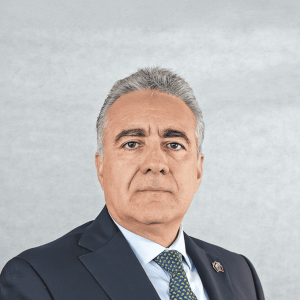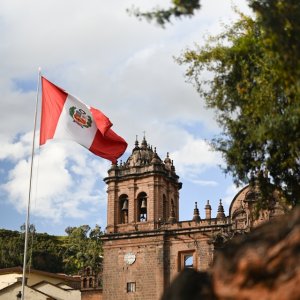What are the Driving Forces Behind Rapid Economic Development?

STORY INLINE POST
Q: The Republic of Korea turned its economy and quality of life around in just 70 years. What is the formula for its success?
A: I believe that education is one of the important driving forces largely responsible for prompting our country’s rapid economic development. The Korean people’s passion for education made it possible to foster a highly motivated and educated human capital and to overcome the lack of natural resources and infrastructure, which were devastated in the Korean War. I also would like to point out the government’s leadership in export-led development and the strong entrepreneurship of private companies. The Korean government has showcased a very effective leadership in steering our export-driven economy, thus providing much support to our companies. Given that support, Korean companies, such as Samsung and Hundai, have succeeded in the global market, and the growth of the private sector has been the solid foundation of the Korean economy.
I also would like to highlight Korea’s increased investment in R&D that has helped turn the country into a global innovation leader. The Korean government promotes the close collaboration between government, industry and the academic community in the process of economic development. As a result, Korea is very actively investing in R&D. Just last year, our country’s R&D rate of investment, including the public and private sectors, ranked fifth worldwide. However, Korea ranks first globally in terms of the percentage of GDP that goes into our R&D, which is 4.81 percent.
Q: Mexico and the Republic of Korea celebrated 57 years of diplomatic relations in 2019. What have been the major economic developments between the two countries?
A: Given that both the Korean and Mexican economies complement each other, Mexico has become Korea’s largest trading partner in Latin America. Mexico is also our second-leading investment destination in the region. In 2019, Korea became Mexico’s fifth-largest trading partner globally. More than 2,000 Korean companies have invested in Mexico, employing 150,000 Mexican workers. South Korea’s total investment in Mexico totals US$7 billion, which puts our country in second place among Asian investors in Mexico, after Japan. Impressively, we have achieved these outcomes despite the absence of a Free Trade Agreement. If Korea and Mexico were to establish an FTA as an institutional framework for the promotion of trade and investment as well as for additional economic cooperation, our bilateral exchanges and cooperation would likely increase remarkably.
Q: A direct flight from Mexico to Republic of Korea was first launched in 2017. In terms of tourism to and from Mexico, what changes has the Republic of Korea observed?
A: Ever since Aeroméxico launched a direct flight between our two countries in July 2017, our people-to-people exchanges have increased dramatically. In 2019 alone, more than 120,000 Koreans visited Mexico, and well over 28,000 Mexicans visited Korea. Given this growth in demand, Aeroméxico is planning to increase the number of flights for this route, going from four flights to seven flights per week (one per day). Unfortunately, due to the COVID-19 outbreak, there was a decrease in the number of 2020.
Q: From your perspective, what are the benefits of the relationship between Mexico and South Korea in the midst of expanding protectionist trends?
A: Given the current trade dispute between the United States and China, and given the USMCA’s entry into force, Mexico’s geographical importance has gained in significance as a regional platform within our country. In addition, 15 Asian states, including China, have signed the Regional Comprehensive Economic Partnership Agreement (RCEP), which provides a major signal to investors that the region is still committed to multilateral trade integration. Under these regional dynamics, both Korea and Mexico can strive to become essential partners by helping each other engage with other regions. Korea can be a regional gateway for Mexico to access Northeast Asia. In turn, Mexico could provide Korea with the same opportunity of access to North and South America. This will deliver mutually beneficial results, all through closer cooperation.
Q: What message or recommendation would you give to Mexican businesspeople who are looking for opportunities with South Korea?
A: There are many reasons why our country is an attractive destination for Mexican investors. Our country is located in a privileged and strategic location in Northeast Asia, which has become one of the world’s top economic regions. Our location gives us ready access to more than 60 cities and 500 million consumers. We are also the only Asian nation to have signed Free Trade Agreements with the world’s largest markets: the United States, the European Union, and China. We are also often ranked highly by international entities such as the OECD and the World Bank as one of the easiest places to do business. That is why Mexican companies such as Kidzania, Katcon and Promax have thrived in our economy.
Q: What priorities do you want to advance during your time as ambassador?
A: Given my arrival to Mexico City amid the COVID-19 pandemic, my first task was to cooperate with Mexico in addressing some of the outbreak’s negative effects. Our government has provided Korean-made equipment and Korean-made kits that will be used in Mexican medical facilities to carry out more than 48,000 COVID-19 detection tests. Korean and Mexican medical institutes are also working closely to develop medicines against the disease. As ambassador to this great country, I am very pleased to see how well Koreans and Mexicans are cooperating. It reminds me of the famous English proverb, “a friend in need is a friend indeed.”
Ever since the delivery of my credentials to the Mexican government on Sept. 29, I have been actively pursuing several goals, all of which I hope to achieve in view of our shared interest in upgrading our bilateral relationship. My first task is to conclude an FTA between Korea and Mexico. As previously mentioned, our bilateral indicators are already impressive. Signing an FTA will increase our bilateral exchanges in an unprecedented way.
My second goal is for Korea to attain Associate Membership status within the Pacific Alliance (PA). Korea applied for Associate Membership in March 2018. All PA members welcomed Korea’s request. We are very glad that PA members are preparing FTA negotiations with Korea. We, therefore, expect a full-scale negotiation to begin soon. Korea’s participation within the PA will provide new opportunities for increased market access among its members, thereby contributing to the economic development of our countries. This is one of our government’s various efforts to strengthen cooperation with the Latin American region.
Q: What are your main short-term goals?
A: 2022 will mark the 60th anniversary of the establishment of diplomatic relations between Korea and Mexico. In Asian culture, a 60-year anniversary has a very important meaning: the maturity of life. As a result, our embassy in Mexico is preparing various commemorative events, including cultural performances and the publication of a white paper, which will include an overview of the past, the present and the future of Korean-Mexican relations. I trust that 2022 will be a milestone of maturity in bilateral relations between our countries.








 By Alessa Flores | Senior Journalist and Industry Analyst -
Thu, 12/17/2020 - 09:00
By Alessa Flores | Senior Journalist and Industry Analyst -
Thu, 12/17/2020 - 09:00
















